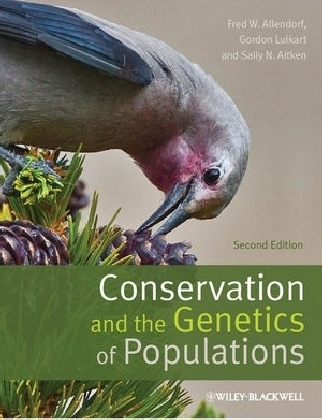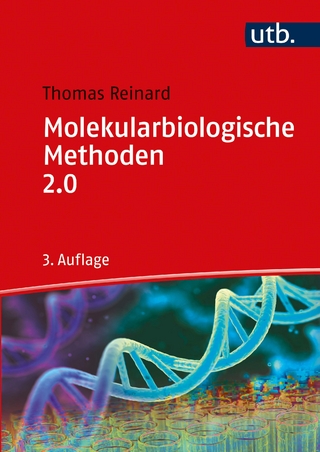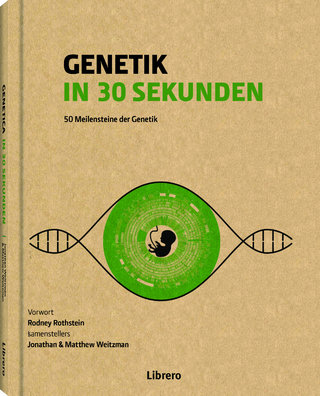
Conservation and the Genetics of Populations
Wiley-Blackwell (an imprint of John Wiley & Sons Ltd) (Verlag)
978-0-470-67146-7 (ISBN)
- Titel ist leider vergriffen;
keine Neuauflage - Artikel merken
Loss of biodiversity is among the greatest problems facing the world today. Conservation and the Genetics of Populations gives a comprehensive overview of the essential background, concepts, and tools needed to understand how genetic information can be used to conserve species threatened with extinction, and to manage species of ecological or commercial importance.
New molecular techniques, statistical methods, and computer programs, genetic principles, and methods are becoming increasingly useful in the conservation of biological diversity. Using a balance of data and theory, coupled with basic and applied research examples, this book examines genetic and phenotypic variation in natural populations, the principles and mechanisms of evolutionary change, the interpretation of genetic data from natural populations, and how these can be applied to conservation.
The book includes examples from plants, animals, and microbes in wild and captive populations. This second edition contains new chapters on Climate Change and Exploited Populations as well as new sections on genomics, genetic monitoring, emerging diseases, metagenomics, and more.
One-third of the references in this edition were published after the first edition. This book is essential for advanced undergraduate and graduate students of conservation genetics, natural resource management, and conservation biology, as well as professional conservation biologists working for wildlife and habitat management agencies.
Fred W. Allendorf is a Regents Professor at the University of Montana and a Professorial Research Fellow at Victoria University of Wellington in New Zealand. He has published over 200 articles on the population genetics and conservation of fish, amphibians, mammals, invertebrates, and plants. He is a past President of the American Genetic Association, and has served as Director of the Population Biology Program of the National Science Foundation. He has taught conservation genetics at the University of Montana, University of Oregon, University of Minnesota, University of Western Australia, Victoria University of Wellington, and the US National Conservation Training Center.
Gordon Luikart is an Associate Professor at the Flathead Lake Biological Station of the University of Montana and a Visiting Scientist in the Center for Investigation of Biodiversity and Genetic Resources at the University of Porto, Portugal. He is also an award winning (Bronze Medal) Research Scientist with the Centre National de la Recherche Scientifique at the University Joseph Fourier in Grenoble, France. His research focuses on the conservation and genetics of wild and domestic animals, and includes over 100 publications. He was a Fulbright Scholar at La Trobe University, Melbourne, and he is a member of the IUCN Specialist Group for Caprinae (mountain ungulates) conservation.
Sally N. Aitken is a Professor in the Department of Forest Sciences and Director of the Centre for Forest Conservation Genetics at the University of British Columbia. She studies the population, conservation, ecological genetics, and genomics of forest trees. S he received her PhD from the University of California, Berkeley, and she was a faculty member at Oregon State University. She has received the Canadian Forestry Scientific Achievement Award, a Killam Faculty Research Fellowship, and a Killam Teaching Prize. She teaches forest biology, alpine ecology, and conservation genetics, and she is involved in forest genetic conservation initiatives in North America and Europe.
Guest Box authors, ix
Preface to the second edition, xi
Preface to the first edition, xiii
List of symbols, xv
PART I: INTRODUCTION, 1
1 Introduction, 3
Guest Box 1: L. Scott Mills and Michael E. Soulé, The role of genetics in conservation, 13
2 Phenotypic variation in natural populations, 14
Guest Box 2: Chris J. Foote, Looks can be deceiving: countergradient variation in secondary sexual color in sympatric morphs of sockeye salmon, 32
3 Genetic variation in natural populations: chromosomes and proteins, 34
Guest Box 3: E. M. Tuttle, Chromosomal polymorphism in the white-throated sparrow, 52
4 Genetic variation in natural populations: DNA, 54
Guest Box 4: Louis Bernatchez, Rapid evolutionary changes of gene expression in domesticated Atlantic salmon and its consequences for the conservation of wild populations, 74
PART II: MECHANISMS OF EVOLUTIONARY CHANGE, 77
5 Random mating populations: Hardy- Weinberg principle, 79
Guest Box 5: Paul Sunnucks and Birgita D. Hansen, Null alleles and Bonferroni 'abuse': treasure your exceptions (and so get it right for Leadbeater's possum), 93
6 Small populations and genetic drift, 96
Guest Box 6: Menna E. Jones, Reduced genetic variation and the emergence of an extinction-threatening disease in the Tasmanian devil, 115
7 Effective population size, 117
Guest Box 7: Craig R. Miller and Lisette P. Waits, Estimation of effective population size in Yellowstone grizzly bears, 134
8 Natural selection, 136
Guest Box 8: Paul A. Hohenlohe and William A. Cresko, Natural selection across the genome of the threespine stickleback fish, 154
9 Population subdivision, 156
Guest Box 9: M.K. Schwartz and J.M. Tucker, Genetic population structure and conservation of fisher in western North America, 185
10 Multiple loci, 187
Guest Box 10: Robin S. Waples, Estimation of effective population size using gametic disequilibrium, 203
11 Quantitative genetics, 205
Guest Box 11: David W. Coltman, Response to trophy hunting in bighorn sheep, 229
12 Mutation, 230
Guest Box 12: Michael W. Nachman, Color evolution via different mutations in pocket mice, 242
PART III: GENETICS AND CONSERVATION, 245
13 Inbreeding depression, 247
Guest Box 13: Lukas F. Keller, Inbreeding depression in song sparrows, 268
14 Demography and extinction, 270
Guest Box 14: A. G. Young, M. Pickup, and B. G. Murray, Management implications of loss of genetic diversity at the selfincompatibility locus for the button wrinklewort, 293
15 Metapopulations and fragmentation, 296
Guest Box 15: Robert C. Vrijenhoek, Fitness loss and genetic rescue in stream-dwelling topminnows, 313
16 Units of conservation, 316
Guest Box 16: David J. Coates, Identifying units of conservation in a rich and fragmented flora, 350
17 Hybridization, 352
Guest Box 17: Loren H. Rieseberg, Hybridization and the conservation of plants, 375
18 Exploited populations, 377
Guest Box 18: Gu?rún Marteinsdóttir, Long-term genetic changes in the Icelandic stock of Atlantic cod in response to harvesting, 393
19 Conservation breeding and restoration, 395
Guest Box 19: Robert C. Lacy, Understanding inbreeding depression: 25 years of experiments with Peromyscus mice, 419
20 Invasive species, 421
Guest Box 20: Richard Shine, Rapid evolution of introduced cane toads and native snakes, 438
21 Climate change, 440
Guest Box 21: S. J. Franks, Rapid evolution of flowering time by an annual plant in response to climate fluctuation, 453
22 Genetic identification and monitoring, 455
Guest Box 22: C. Scott Baker, Genetic detection of illegal trade of whale meat results in closure of restaurants, 481
Appendix: Probability and statistics, 484
A1 Paradigms, 485
A2 Probability, 487
A3 Statistical measures and distributions, 489
A4 Frequentist hypothesis testing, statistical errors, and power, 496
A5 Maximum likelihood, 499
A6 Bayesian approaches and MCMC (Markov Chain Monte Carlo), 500
A7 Approximate Bayesian Computation (ABC), 504
A8 Parameter estimation, accuracy, and precision, 504
A9 Performance testing, 506
A10 The coalescent and genealogical Information, 506
Guest Box A: James F. Crow, Is mathematics necessary?, 511
Glossary, 513
References, 531
Index, 587
Color plates section between page 302 and page 303
| Erscheint lt. Verlag | 17.12.2012 |
|---|---|
| Verlagsort | Chicester |
| Sprache | englisch |
| Gewicht | 1370 g |
| Einbandart | gebunden |
| Themenwelt | Naturwissenschaften ► Biologie ► Genetik / Molekularbiologie |
| Naturwissenschaften ► Biologie ► Ökologie / Naturschutz | |
| ISBN-10 | 0-470-67146-7 / 0470671467 |
| ISBN-13 | 978-0-470-67146-7 / 9780470671467 |
| Zustand | Neuware |
| Haben Sie eine Frage zum Produkt? |
aus dem Bereich


